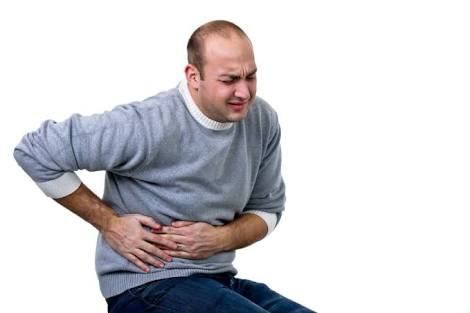Blood
Blood
Introduction
Blood id pure when it originates in the proper place and time and response to practical need.. Pure blood endows a person with strength, colour and a healthy life because the vital breath follows blood. Blood becomes impure through various articles of diet, exposure to elements and emotions. Habitual drinking of spoilt or potent wine in large quantities, eating excessive quantities of salty, caustic, sour, and pungent foods, horsegram, black gram, sesame, tubers, oil, curd, vinegar, and sour fermented drinks, stale or spoilt food, fatty and heavy foods can make blood impure.
Excessive exposure to sun, and wind and the transitional period before autumn tends to affect the blood adversely. Suppression of urges to vomit, missing blood letting when it is due, extremes anger, and over exertion are also capable of making the blood impure.
Blood is regarded as pure, when it has the color of gold, fire fly, red lotus, lac juice or gunja fruit. Under the influence of vata it becomes more red, non-slimy, frothy and thin. Pitta turns it yellow or blackish with delayed clotting. Kapha makes it pale slimy and viscous. The combine disturbance of doshas will produce mixed effects.
When the purity of blood is disturbed, many disorders occur Significant example include Stomatitis, gaseous lump in the abdomen cellulitis, internal bleeding blood in urine, excessive bleeding during periods, narcosis, fever, severe debility, skin infections, and mental confusions. When curable diseases fail to respond to conventional treatment, one should be alert to the possibility of blood as the source of disease.
For disease caused by impure blood the treatment essentially aims at countering the impurity in blood and disturbed pitta. The techniques used to achieve the objective are purgation, fasting and blood lettings. If blood letting is employed the patient should take appetizing and wholesome food and drinks. As the blood in the body is unsettled after blood letting, special care should be taken that the digestive fire is not impaired by the wrong kind of food.
Narcosis (MADA).Fainting (MURCCHA),And Coma (SANYASA)
When the body is polluted by unclean food and the mind by rajas and tamas, the perturbation of doshas singly or in combination, is sure to follow.
"KEEP YOUR BOWEL CLEAN AND KEEP YOUR MIND CLEAN."
The perturbed doshas occlude, in varying degrees, the ubiquitous channels which transports blood, chyle and conciousness in the body. and bringing about alterations in conciousness ranging from fainting and narcosis to coma.
Narcosis may be caused by liquor, passions or vitiated blood, but the mechanism of the loss of conciousness is inevitably tried with the disturbance of the three doshas. When the narcosis is due to vata, the patient's speech is slurred, excessive and fast, movement is unsteady, and the face turn blackish or reddish before he falls. In the pittaja version, the patient would become belligerent, harsh in speech and inclined to violence, the face may be crimson, yellow or black in colour. In kapha narcosis the patient would speak little, and sound incoherent, and would appear pale drowsy and limp. In general, the patient recovers spontaneously from fainting and narcosis, including that due to liquor, but when all the three doshas are disturbed, coma may occur which does not respond except to medical treatment.
When fainting is due to vata, the patient looses consciousness seeing the sky as blue, black or reddish. He may have tremors, Bodyache, pain over the cardiac region and darkish or reddish hue but would regain conciousness quickly. When the episode is triggered by pitta disturbances. the patient would see the sky as red green or yellow and experience thirst, fever, loose stools and redness or yellowness in the eyes. He would recover soon with the appearance of sweating. In kapha induced fainting, he would see the sky as if covered by dense and dark clouds. The body part will feel heavy as if wrapped in wet leather and there would be profuse salivation. The recovery of consciousness is slow in this case. When all the doshas are disturbed. a combination of symptoms would occur and the patient would loose conciousness. like an epileptic but without seizures.
Coma is precipitated when when the disturbed doshas are strong have lodged themselves in the center for vital breath and impair every activity of the body and mind. The comatose patient looks rigid and cadaveric and dies unless the episode is treated as an emergency. To arose the patient, the physician regime include several stimulatory measures.
Eyedrops, smoke, needle and hot applications on the skin, painful stimuli on nail bed. As the conciousness improves strong alcoholic preparation laced with pungent addition should be instilled in the patients mouth. Stimulatory drinks could also be tried. When the patient is considered fully conscious, he should be given a light diet, exposed to a joyous environment composed of aggregable talk, narration of stories and reminiscences, music and song and enchanting landscape. The medical procedure would be beneficial are evacuative measures, gargles, blood letting and massage of the body. The evacuative measures should be applied followed by rasayana therapy are beneficia.. Blood letting is also used in treatment of narcosis and fainting. The aim should be to protect the mind beside treating body.
https://madhuchhandacdmo.blogspot.com/2022/11/blood.html
only after the patient has




Comments
Post a Comment